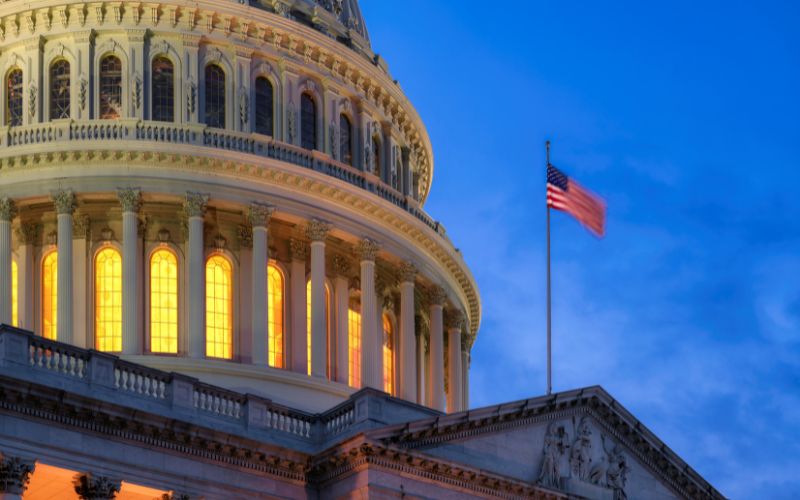
- Details
- By Elyse Wild
The Parity for Tribal Law Enforcement Act of 2025 would help tribal police departments hire and retain tribal law enforcement officers by providing access to federal retirement, pension, death, and injury benefits similar to those of law enforcement officers from non-tribal jurisdictions.
Tribal communities have long suffered inadequate funding for public safety. According to the Department of the Interior, public safety and justice at the Bureau of Indian Affairs is funded at just 13% of need. More than 25,600 personnel are needed to adequately serve Indian Country, including at least 13,000 additional tribal law enforcement officers to meet the FBI's Community Safety Standards. In recent years, tribes have sued the federal government for not providing adequate public safety.
The legislation comes after a June 22 House committee hearing in which tribal leaders and citizens testified about international criminal cartels targeting their communities for drug trafficking.
While the opioid crisis touches every community — once characterized by the overprescription of opioids and now by the proliferation of the highly lethal synthetic opioid fentanyl in the drug supply — Indian Country continues to bear the highest overdose rates.
Lummi Nation Chairman Anthony Hillaire spoke about the scourge of overdose deaths on the Nation's reservation in northern Washington.
"Each day we are losing relatives to addiction and drug-related overdoses," Hillaire said. "Our relatives, our families, and our friends are suffering at the hands of powerful drug trafficking operations. We need adequate resources and jurisdiction to tackle the issue and arrest and prosecute traffickers who are targeting our communities."
Bolster law enforcement could aim critical resources to the MMIP crisis.
Native women and girls are murdered at a rate 10 times the national average. Homicide is one of the leading causes of death for Native women ages 10-34. The Bureau of Indian Affairs estimates there are 4,200 unsolved MMIP cases, although those numbers are outdated and the actual number is likely higher, Native advocates say.
The legislation could fulfill a recommendation made by the
The Not Invisible Act Commission —a federal commission tasked with developing federal recommendations to solve the MMIP crisis — issued its final report to Congress in November 2023. Among the recommendations to return criminal jurisdiction to the Tribal nations, coordinated reporting, investigation and data sharing, the committee pointed to the need for investment in Tribal law enforcement, including in training, benefits, and pay equity.
Several tribal officials across Indian Country released statements in support of the bill.
“Access to resources is critical to improving the recruitment and retention tribal law enforcement officers," Nisqually Tribe Chairman Ken Choke, said in a statement. "The Parity for Tribal Law Enforcement Act removes administrative barriers and provides the necessary reforms to protect our community."
More Stories Like This
Chumash Tribe’s Project Pink Raises $10,083 for Goleta Valley Cottage Hospital Breast Imaging CenterMy Favorite Stories of 2025
The blueprint for Indigenous Food Sovereignty is Served at Owamni
Seven Deaths in Indian Country Jails as Inmate Population Rises and Staffing Drops
Sen. Luján Convenes Experts to Develop Roadmap for Native Maternal Health Solutions


